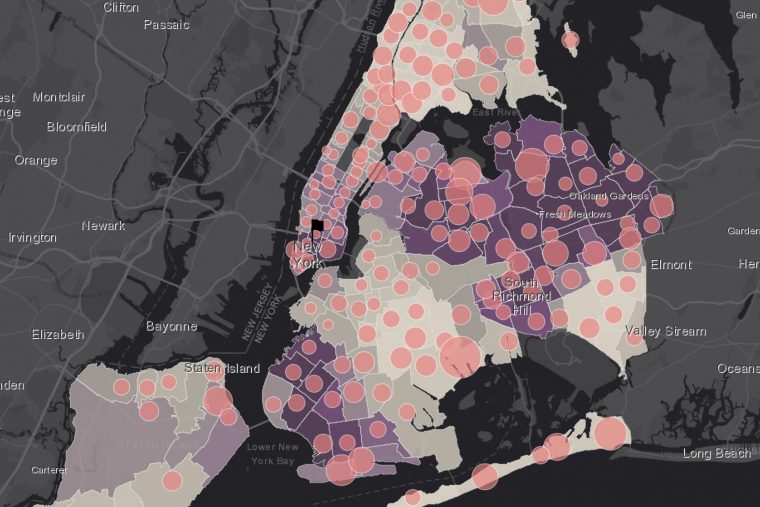Throughout the COVID-19 pandemic, the public has relied on dynamic visualizations in the form of maps and apps to keep up-to-date with the spread of the disease on both local and global scales. And with the use of geo-enabled apps, individuals can locate COVID-19 testing and vaccination sites, order groceries and other goods online, find uncrowded outdoor spaces, and track and even map the number of available medical resources in area hospitals. "All of these services are available due to geographic information systems (GIS)," said Kim Diver, associate professor of the practice in earth and environmental sciences. "By using spatiotemporal visualizations, we…
A paper co-authored by Ellen Thomas, research professor of earth and environmental sciences, was published in the Proceedings of the National Academy of Sciences, July 2009. In the article, "Surviving mass extinction by bridging the benthic/planktic divide," Thomas and her colleagues show a very unexpected observations, i.e. that a species of foraminifera, which lives floating in the surface waters of the Indian Ocean, is genetically the same as a species living on the bottom of the ocean in shallow waters (between tide levels, coast of Kenya) - using DNA analysis. "We then show, using a sophisticated way of chemical analysis,…
Ellen Thomas, research professor in the Department of Earth and Environmental Sciences, attended the 'Climate and Biota of the Early Paleogene' meeting in New Zealand in January. She was on the organizing committee for this meeting, and presented an invited talk during the 'Greenhouse Earth Symposium,' an event presenting the highlights of relevant research to the general public. Thomas also was the co-author on two other talks, which she presented with her Ph.D students from Utrecht University in the Netherlands and Leuven University in Belgium. She also co-authored a poster Laia Alegret from Zaragoza University in Spain. Alegret spent two…
A paper by Ellen Thomas, research professor of earth and environmental sciences, is listed as one of the 100 most influential papers in the earth sciences by MantlePlumes.org. Thomas's article, "Trends, rhythms, and aberrations in global climate 65 Ma to present," was originally published in Science, 292, in 2001. Also included in the top 100 are Charles Darwin's The Structure and Distribution of Coral Reefs, published in 1842, and British geologist Sir Charles Lyell's Principles of Geology, from 1830-33. The same paper was also identified by Thomson Reuters Scientific's Essential Science Indicators as one of the most highly cited papers…
Johan Varekamp, the Harold T. Stearns Professor of Earth Science, is a co-editor of a special volume on "Volcanic Lakes and Environmental Impacts of Volcanic Fluids," for the for the Journal of Volcanology and Geothermal Research, Volume 178, Issue 2, published Dec. 10, 2008. He's worked on the publication for more than two years. The publication contains 17 articles including one of Varekamp's own papers titled "The volcanic acidification of glacial Lake Caviahue, Province of Neuquen, Argentina," found on pages 184-196.
Dana Royer, assistant professor of earth and environmental sciences, contributed to an important study on the dangerous levels of Carbon Dioxide on the planet. He is featured in a Nov. 6 issue of Health News Digest. According to the article, if climate disasters are to be averted, atmospheric carbon dioxide (CO2) must be reduced below the levels that already exist today. The model, created by Royer and nine other scientists from the U.S., the U.K. and France, suggests “the only realistic way to sharply curtail CO2 emissions is phase out coal use except where CO2 is captured and sequestered.” According…
The topic of “Climate Policy: A Progress Report” is the theme of the Fourth Annual Robert Schumann Environmental Studies Symposium "Where on Earth are we Going?" which will be held on Oct. 18. The event begins at 8:30 a.m. in Exley Science Center Room 150, the Tischler Lecture Hall. (more…)


